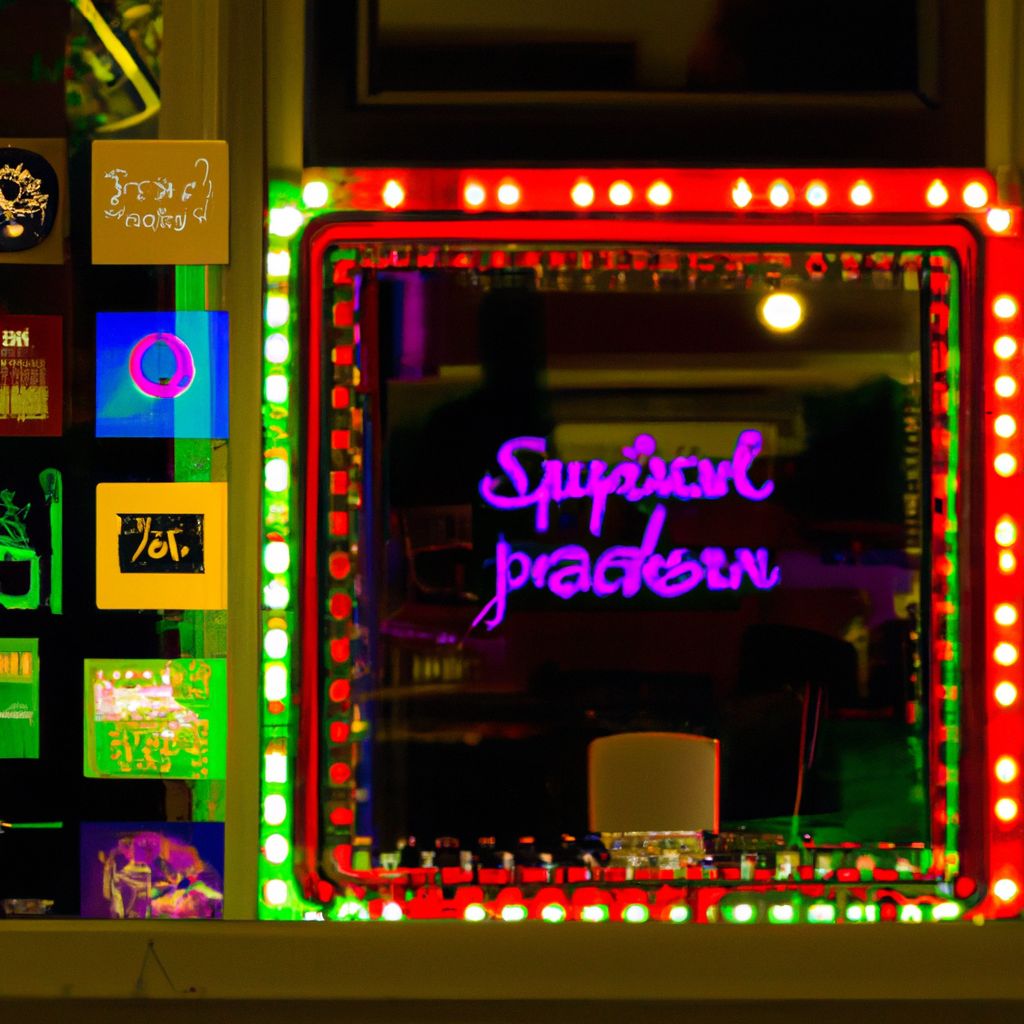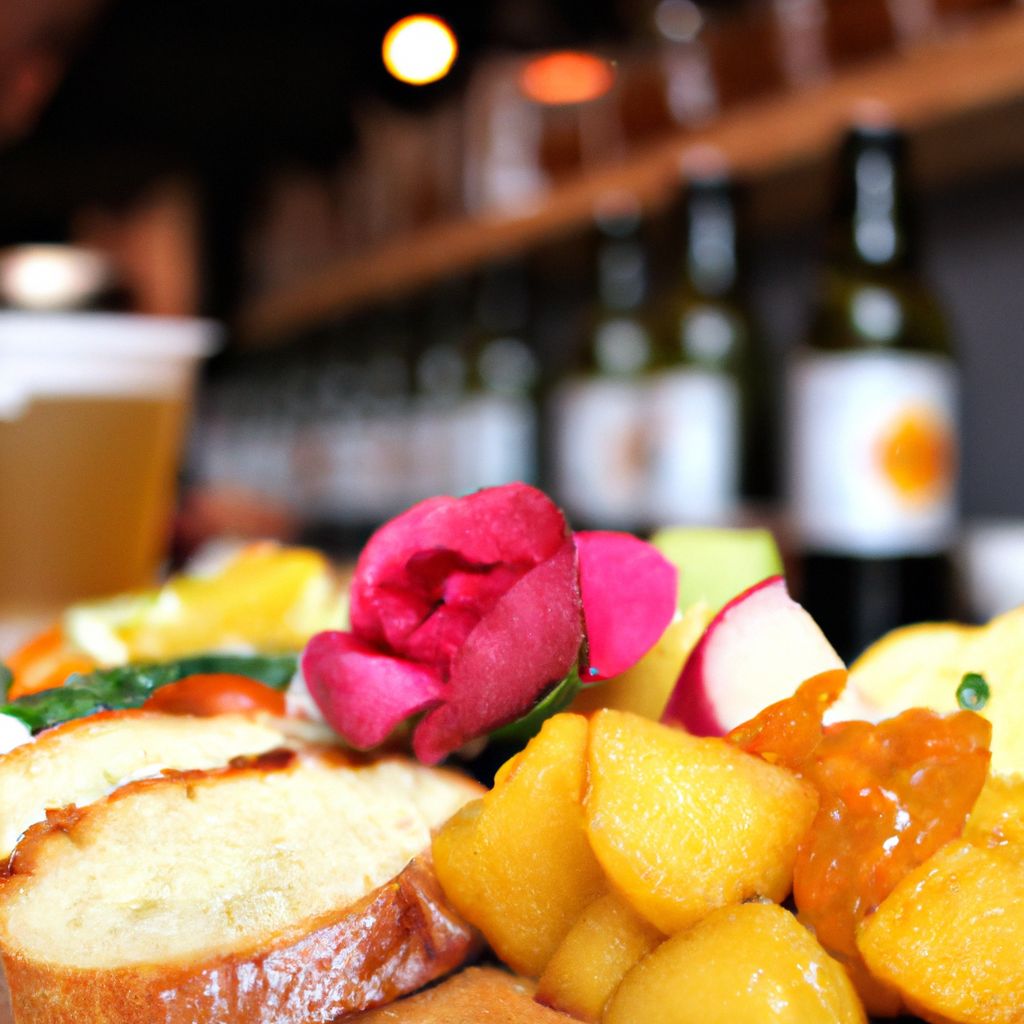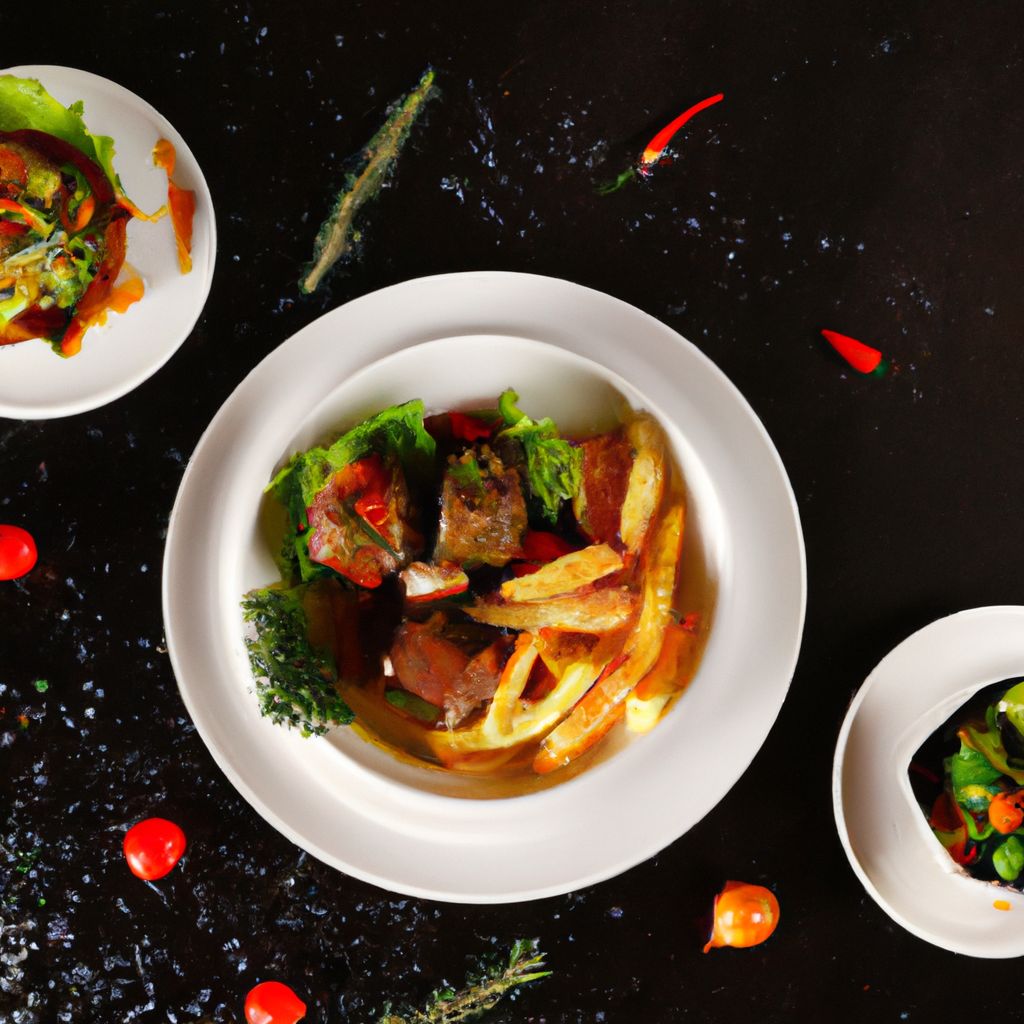.jpg)
.jpg)
Introduction: Importance of Marketing Strategies in the Bar Restaurant Industry
Marketing strategies are a must-have for the bar restaurant industry. They’re key for drawing customers, building brand recognition and boosting revenue. Applying effective marketing techniques can help establishments to stand out from the competition and create a devoted clientele.
To know the target audience is one crucial piece of the puzzle. By studying demographics and consumer behavior, bars can shape their marketing plans to appeal to their ideal customers. This includes creating promotional campaigns, such as enticing offers and social media outreach.
Branding is also vital. A strong brand identity makes bars different from the rest in the industry. It involves creating an exclusive personality, logo, slogan and consistent messaging across all marketing channels. By crafting a recognizable brand, bars can earn the trust of customers and spark long-term loyalty.
Online presence is essential nowadays. Bar restaurants need an interactive website that shows their menu, atmosphere and events. Moreover, participating on social media platforms, like Facebook and Instagram, helps attract customers through visually striking posts and timely promotions.
One example of the importance of marketing strategies is “Cheers” – a local bar restaurant. Despite great food and a cozy atmosphere, they had trouble attracting customers due to lack of effective marketing tactics. On realizing this issue, they changed their strategy by deploying targeted Facebook ads and hosting weekly trivia nights tailored to their ideal customers. Thanks to these efforts, “Cheers” witnessed a noticeable upsurge in foot traffic and experienced higher customer engagement online and offline.
Key Marketing Channels for Bar Restaurants
Bar restaurants have a range of marketing channels to draw in customers and raise visibility. These channels aid bar restaurants in reaching their target audience and promote their unique services. Here are six essential marketing channels for bar restaurants:
- Social Media: Use platforms such as Facebook, Instagram, and Twitter to interact with clients, share updates on promos and events, and display the atmosphere and menu.
- Email Marketing: Form an email list of devoted customers and send out regular newsletters with special offers, upcoming events, and new menu items.
- Online Listings: Make sure your bar restaurant is listed on popular review sites like Yelp and Google My Business to improve your online presence and draw in prospective customers searching for bars in your vicinity.
- Influencer Marketing: Work with local influencers who align with your brand values to promote your bar restaurant through sponsored content on their social media platforms.
- Event Sponsorship: Collaborate with local organizations or sports teams to sponsor events or host watch parties, which can help raise awareness about your bar restaurant among related audiences.
- Local Advertising: Invest in targeted advertising campaigns through print ads in local newspapers or magazines, billboards placed in high-traffic areas near your establishment.
A further successful marketing strategy for bar restaurants is teaming up with nearby hotels or guesthouses to give promotional packages that include eating at your establishment. This can draw tourists staying in the area and encourage them to visit your bar restaurant during their stay.
To construct a strong online presence, optimize your website for SEO by including relevant keywords related to bar restaurants, menus, and atmosphere. This will enhance your website’s visibility in search engine results when potential customers are seeking places to eat.
Now, let’s investigate the true history of the importance of marketing channels for bar restaurants. In the early 19th century, when bars were mainly seen as local watering holes, marketing strategies were limited to word-of-mouth and basic ads in newspapers.
However, with the arrival of digital marketing and the expanding relevance of social media platforms, bar restaurants now have a broad selection of marketing channels at their disposal to draw in customers and make their mark in the competitive industry.
Creating a brand identity is like ordering a cocktail – you need the right mix of ingredients to satisfy clients and leave them wanting more.
Building a Strong Brand Identity
Building a strong brand identity is essential for success. It helps to differentiate and build trust. Consistent visuals, quality service, and a USP set you apart. Create an emotional connection through stories and experiences. Communicate with customers via social media, newsletters, and more. Quality, service, and experience must be consistent.
An example of a successful bar restaurant was a small city bar. Despite fierce competition, they created a welcoming atmosphere. They provided exceptional service, delicious food, and signature cocktails. The menu, decor, and promo materials enhanced the unique identity. Word-of-mouth and online reviews made them a local go-to. Their dedication to brand identity paid off in loyalty and profitability.
Finding your audience is like searching for a drinking unicorn – rare and magical.
Targeting the Right Audience
Professional restaurant marketing requires targeting the right audience. To do this, consider factors like age, location, interests, and spending habits. Tailor your campaigns to appeal directly to each demographic. Here’s a table of ideas:
| Demographic | Targeting Strategy |
|---|---|
| Young adults | Use social media to showcase trendy dishes and drinks. |
| Families | Offer family deals and kid-friendly menu options. |
| Business professionals | Promote lunch specials and happy hours near office buildings. |
| Tourists | Highlight local cuisine and create tourist-friendly menus. |
In addition, host themed events or partner with local orgs/influencers. Remember to customize messages for each demographic. Don’t miss any opportunities for growth! Start implementing these targeted strategies today to ensure success.
Promotional Activities
Now let’s explore the promotional activities we can use! Here’s a look:
| Activity | Description | Example |
|---|---|---|
| Loyalty Programs | Reward customers for repeat visits | Free appetizer after a few visits |
| Happy Hour Specials | Discounts on drinks/food during specific hours | Half-priced cocktails 5-7 pm |
| Live Entertainment | Host live music to draw in patrons | Halloween costume party with prizes |
Don’t forget about social media platforms! Use Facebook, Instagram, and Twitter to advertise events, show mouth-watering food pics, and talk to customers.
Pro Tip: Partner with local influencers and bloggers to get more eyes on your business. Adding fun customer experiences is like adding hot sauce – it’ll make them come back for more!
Enhancing the Customer Experience
Enhancing the customer experience is essential for any bar restaurant to succeed in a competitive market. Going the extra mile to ensure customers have a great time can build loyalty, attract new patrons, and increase revenue.
To achieve this, bar restaurants can apply various tactics. Here’s a table of effective ways to enhance customer experience:
| Strategy | Description |
|---|---|
| Personalized service | Offer tailored experiences to make guests feel valued. |
| Atmosphere and ambiance | Create a welcoming environment with lighting, music, and decor. |
| Menu variety and innovation | Offer diverse options that cater to different tastes and dietary restrictions. |
| Efficient order processing | Streamline the ordering process to reduce waiting times. |
| Staff training and professionalism | Train staff members to provide excellent service with courtesy and efficiency. |
| Prompt issue resolution | Address customer complaints or concerns quickly and effectively. |
Bar restaurants can also consider special events or loyalty programs to further engage customers and create lasting impressions.
For instance, a bar restaurant in my town hosts live music performances every Friday night. This not only enhances the atmosphere, but also gives customers a chance to enjoy great entertainment while having their drinks or meals. The lively ambiance plus exceptional service make this establishment a popular spot for locals.
By focusing on enhancing customer experience through personalized service, attention to detail, innovative offerings, efficient processes, and addressing concerns promptly, bar restaurants can become preferred destinations for food enthusiasts seeking more than just good food. Furthermore, tracking and measuring marketing performance is key to counting empty glasses as well as profits.
Tracking and Measuring Marketing Performance
To make data-driven decisions and optimize their marketing efforts, bar and restaurant owners need to understand metrics. They track the performance of different channels and campaigns to know which strategies generate leads and conversions. This helps them allocate resources more efficiently and focus on initiatives that yield higher returns.
For instance, the hypothetical example shows:
| Metrics | Value |
|---|---|
| Customer Acquisition | $500 |
| Cost per Conversion | $50 |
| Conversion Rate (%) | 10% |
| Return on Investment | 4:1 |
For every dollar invested in marketing, four dollars are generated in return. It costs $50 to convert a prospect into a customer. And 10% of leads become paying customers.
However, these numbers differ based on the nature and scale of each establishment. To understand their specific marketing performance, businesses must collect and analyze data.
By tracking systems and analytics tools, bars and restaurants can refine their strategies. Monitoring performance helps them quickly adapt to changing market trends and consumer preferences.
Successful establishments recognize the importance of data-driven decision-making for promoting their businesses. Observing key performance indicators allows them to adjust strategies, optimize investments, and drive sustainable business growth.
Continuous adaptation and improvement in bar restaurant marketing is essential for success.
Conclusion: Importance of Continuous Adaptation and Improvement
Adapting and improving are musts for the success of bar restaurant marketing. To stay ahead, they must change and evolve. Analyzing trends, customer feedback and competitor info helps refine offerings and customer experiences.
Tech-savvy customers are attracted by embracing new digital platforms and consumer behavior. Social media marketing, online ordering, mobile apps and personalized experiences can boost visibility.
Menu offerings and ambiance must be refined based on customer preferences. Surveys or direct interactions help identify areas for improvement. Adjusting menus, introducing unique dishes, captivate customers and keep them coming back.
Fostering relationships with suppliers contributes to continuous improvement. Working with local farmers or artisanal producers supports sustainability and adds an exclusive touch. This sets the bar restaurant apart from others.
Frequently Asked Questions
FAQ 1:
Q: What are some effective bar restaurant marketing strategies?
A: Some effective marketing strategies for bar restaurants include social media promotion, hosting events and parties, offering special deals and happy hours, collaborating with local influencers, implementing customer loyalty programs, and utilizing email marketing campaigns.
FAQ 2:
Q: How can social media promotion benefit a bar restaurant?
A: Social media promotion can benefit a bar restaurant by increasing brand visibility, attracting new customers, engaging with the audience through interactive content, promoting special events and offers, and fostering a sense of community among customers.
FAQ 3:
Q: Is hosting events and parties an effective marketing strategy for bar restaurants?
A: Yes, hosting events and parties can be an extremely effective marketing strategy for bar restaurants. Events and parties not only attract more customers but also create a fun and engaging atmosphere, encourage customer loyalty, and provide opportunities for word-of-mouth promotion.
FAQ 4:
Q: How can collaborating with local influencers benefit a bar restaurant?
A: Collaborating with local influencers can benefit a bar restaurant by reaching a wider audience, particularly the influencer’s followers who may be interested in visiting the establishment. Influencers can create buzz, drive online engagement, and endorse the bar restaurant through content creation and social media posts.
FAQ 5:
Q: Why should bar restaurants implement customer loyalty programs?
A: Implementing customer loyalty programs in bar restaurants helps to incentivize repeat visits, boost customer satisfaction, cultivate customer loyalty, and encourage patrons to spend more. Loyalty programs can include discounts, exclusive offers, rewards for referrals, and personalized experiences.
FAQ 6:
Q: How can email marketing campaigns be effective for bar restaurants?
A: Email marketing campaigns can be effective for bar restaurants as they allow for direct communication with customers. By sending personalized offers, event invitations, and news updates, bar restaurants can increase customer engagement, drive repeat business, and build long-term relationships with their patrons.



